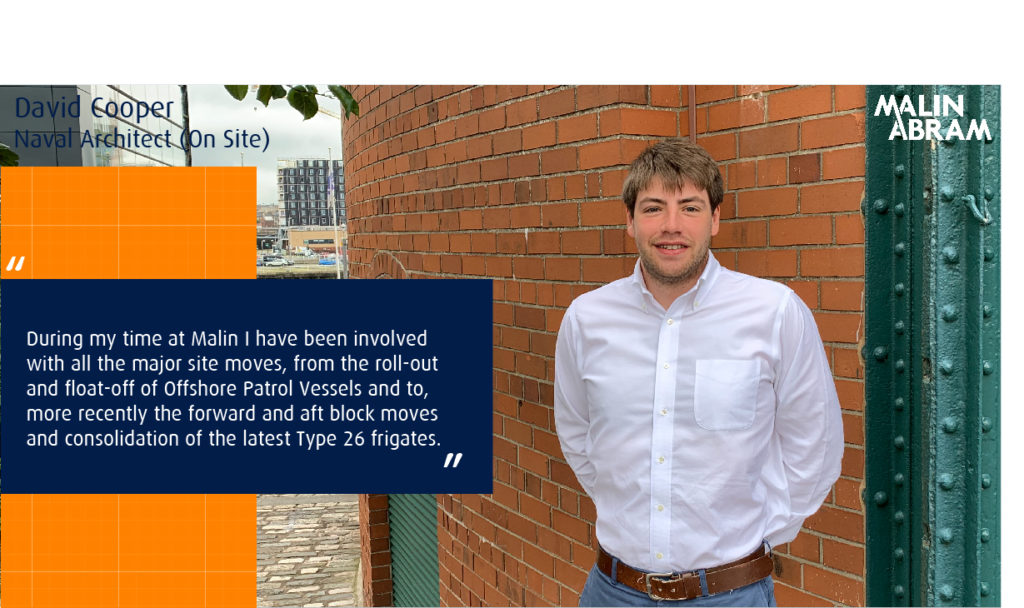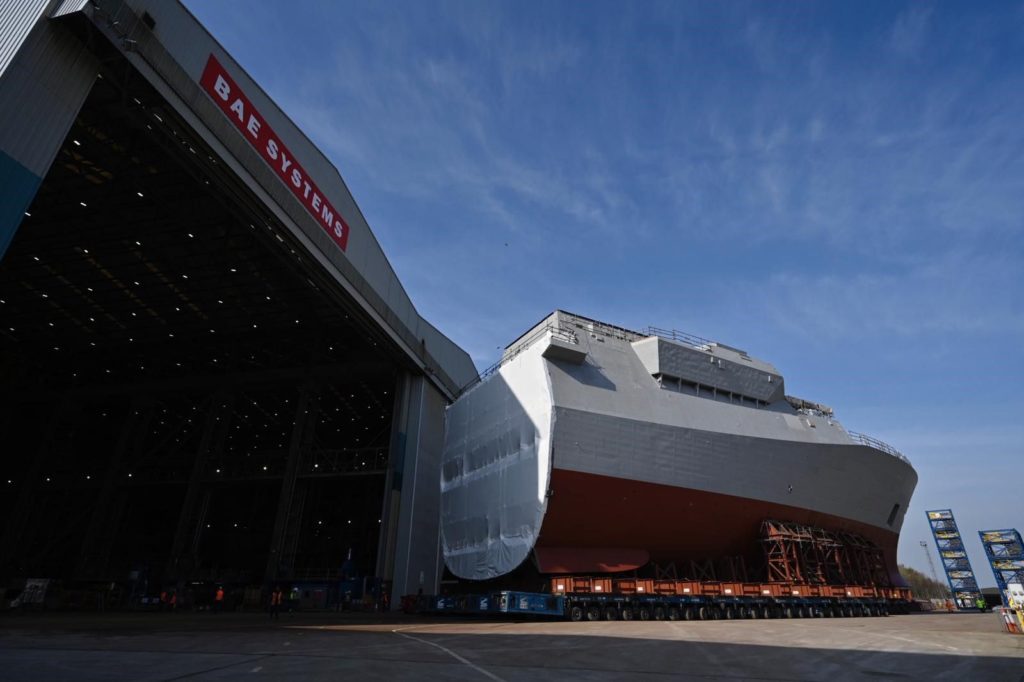
During my time at Malin I have been involved with all the major site moves, from the roll-out and float-off of Offshore Patrol Vessels and to, more recently the forward and aft block moves and consolidation of the latest Type 26 frigates.
A typical day on site would start with meeting our sub-contractors at the security gate before heading down to our portacabin, once there we would put on our necessary PPE, grab a quick coffee, and go through a toolbox talk discussing the days operation. We would then head over to the operational area and carry out an inspection of the trailers to ensure they were ready to carry out the move.
A second toolbox talk follows, with all stakeholders, discussing the operation and safety aspects in detail. Once this is complete, I would have to ensure all appropriate sign offs and approvals have been carried out and that the cargo is ready to be moved.
Having already carried out a walkround of the block and swept path in the days leading up to the operation, detailed checks of the swept path are not required however I always take a final walk and double check the swept path to ensure nothing has been moved than might cause issue. Meanwhile the operators have powered up the SPMTs, carried out final checks on valve positions and trailer coordinates before informing me when the SPMTs are ready. As with all large site moves there are usually quite a few spectators, and at this point, it is key to ensure there are no unauthorised personnel within the operational area.
Once the SPMTs are ready and I will give the operator approval to commence the move, taking it slow at first while clearances are tight. Although the SPMT operator and supervisor are directly in control of the SPMTs, I always keep a close watch on the operation ensuring everything is proceeding as planned. Once the cargo nears its final position, we would then ask for dimensional control team to measure the exact position of the cargo and allowing us to make the required adjustments; this ensures that the load, often thousands of tonnes in weight, may be moved with millimetre precision – it is a delicate yet satisfying stage of the project.

Once the cargo is set down and the load released from the trailers the scope is complete and the team may take some time to reflect, note any learnings for future moves – and take a little break until the next scope.

